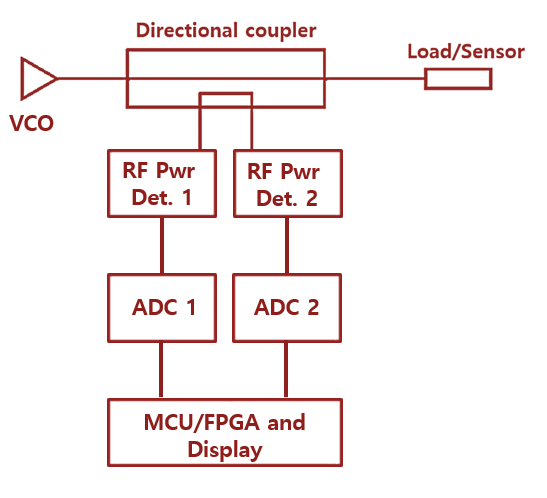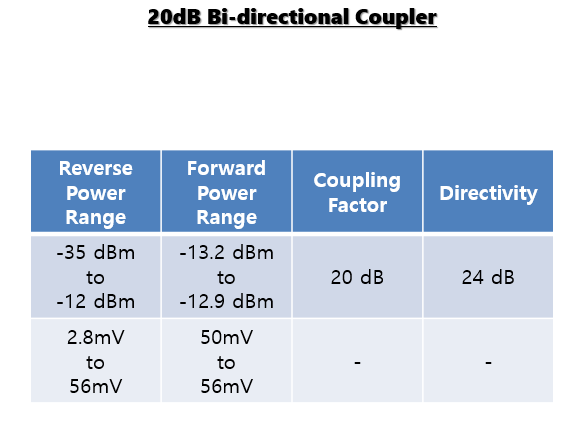Selection of RF Power Detector
Today I measured the RF power range by using the bi-directional coupler for my project 'Return loss measurement using RF sensor as 50-ohm load). The block diagram of my project is attached below:

I measured both of the RF power ranges with the 20dB bi-directional coupler and the numbers are attached below:

The next step for me is to select an RF Power Detector. I need to RFPDs, each handling the coupled powers (incident and reflected) and converting it to an analog voltage.
I have seen that there are three types of RFPDs:
1. Peak or envelop Detector
2. Log Detector, and
3. RMS detector
I need an analog voltage continuously being detected by RFPDs from -35dBm to -7dBm (around 2.8mV to 71mV). Which RF Power Detector shall I use from the above mentioned? According to some research, Peak detector seems a better option. But, I also want some comments from you guys.
Thanks!
RMS Detector should be used due to nature of traveling wave measurement.( see s-parameters )
I got it, thanks!
By the way, the directional bridge circuit which you showed me last time, hasn't released by the company yet :( I am waiting for it for a month now.
http://www.analog.com/en/products/rf...oduct-overview
So, I have decided to use this directional coupler:
https://www.minicircuits.com/WebStor...l=MBDC-20-63HP
And these two RF Power detectors:
http://www.linear.com/product/LTC5587#overview
To make this complete return loss measurement system.
Do you have any comments or suggestions on the selection of these components?
are you forced to use schottky diodes as the detector (since they do not work at the lowest level of -35 dBm)? You would probably need TWO diodes at each port, one with a 10 dB amplifier in front of it, and combine their outputs in an analog op amp linearizer.
IF you can use one of the IC power detectors from Linear Technology or Analog Devices, it will be much easier. Instead of simple diodes, they use LogAmplifier circuits to detect the RF power over a very wide dynamic range.
Remember...you are getting a VERY small DC voltage at the diode output for -35 dBm, and it will be masked by general noise...so it will be hard to find the true signal.
Also, if you are using just schottky diodes....you need to realize that they have a DC bias point drift and gain drift as a function of temperature, and you need to compensate for both
also, consider your ADC. You have an ADC with a 0 to 3 volt input range, and are only putting in 3 to 71 mV? You are not going to get a very good bit sensitivity doing that!
Thank you. I will keep these points under consideration.
